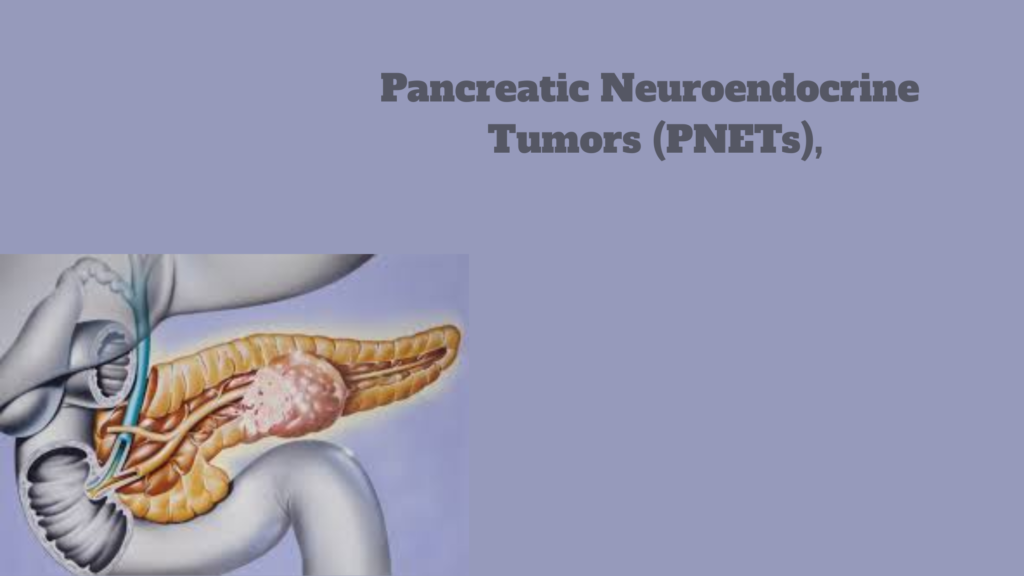
Pancreatic Neuroendocrine Tumors (PNETs), also known as islet cell tumors, are rare neoplasms originating from the endocrine (hormone-producing) cells of the pancreas. Unlike the more common pancreatic ductal adenocarcinoma, PNETs account for approximately 1–2% of all pancreatic cancers .
🧬 Types and Functionality
PNETs are categorized based on their hormonal activity:
- Functional PNETs: These tumors secrete excess hormones, leading to specific clinical syndromes:
- Insulinomas: Secrete insulin, causing hypoglycemia.
- Gastrinomas: Produce gastrin, leading to Zollinger-Ellison syndrome with peptic ulcers.
- Glucagonomas: Release glucagon, resulting in hyperglycemia and skin rash.
- VIPomas: Secrete vasoactive intestinal peptide, causing watery diarrhea and electrolyte imbalances.
- Somatostatinomas: Produce somatostatin, leading to diabetes, gallstones, and steatorrhea.
- Non-functional PNETs: These tumors do not secrete active hormones and often remain asymptomatic until they reach a significant size or metastasize .
🧪 Diagnosis
Diagnosis typically involves:
- Imaging Studies: CT scans, MRI, and endoscopic ultrasound (EUS) help visualize the tumor’s size and location.
- Biopsy: Tissue sampling confirms the tumor’s nature.
- Functional Imaging: Techniques like somatostatin receptor scintigraphy (Octreoscan) assess the tumor’s receptor status, aiding in treatment planning .
💊 Treatment Options
Treatment strategies depend on the tumor’s size, location, functionality, and metastatic status:
- Surgical Resection: The only curative approach, especially for localized tumors.
- Somatostatin Analogs: Medications like octreotide or lanreotide control hormone-related symptoms and may inhibit tumor growth.
- Targeted Therapy: Agents such as everolimus and sunitinib are used for advanced or metastatic tumors.
- Peptide Receptor Radionuclide Therapy (PRRT): Involves radiolabeled somatostatin analogs targeting tumor cells, offering symptom relief and tumor stabilization .
- Chemotherapy: Employed for poorly differentiated or aggressive tumors.
- Liver-directed Therapies: Techniques like radiofrequency ablation or chemoembolization are used for liver metastases .
📊 Prognosis
The prognosis varies based on tumor grade and metastatic spread:
- Localized Tumors: Surgical resection can lead to a favorable outcome.
- Metastatic Disease: Liver metastases are common, and while treatment can control symptoms, long-term survival is challenging.
- Five-Year Survival Rates:
- Localized: Over 90%
- Regional spread: Approximately 70%
- Distant metastasis: Around 20%
🧭 Outlook
PNETs are heterogeneous in behavior, ranging from indolent to aggressive. Early detection and personalized treatment plans are crucial for improving outcomes. Regular follow-up and monitoring are essential for managing symptoms and detecting recurrence or progression.
